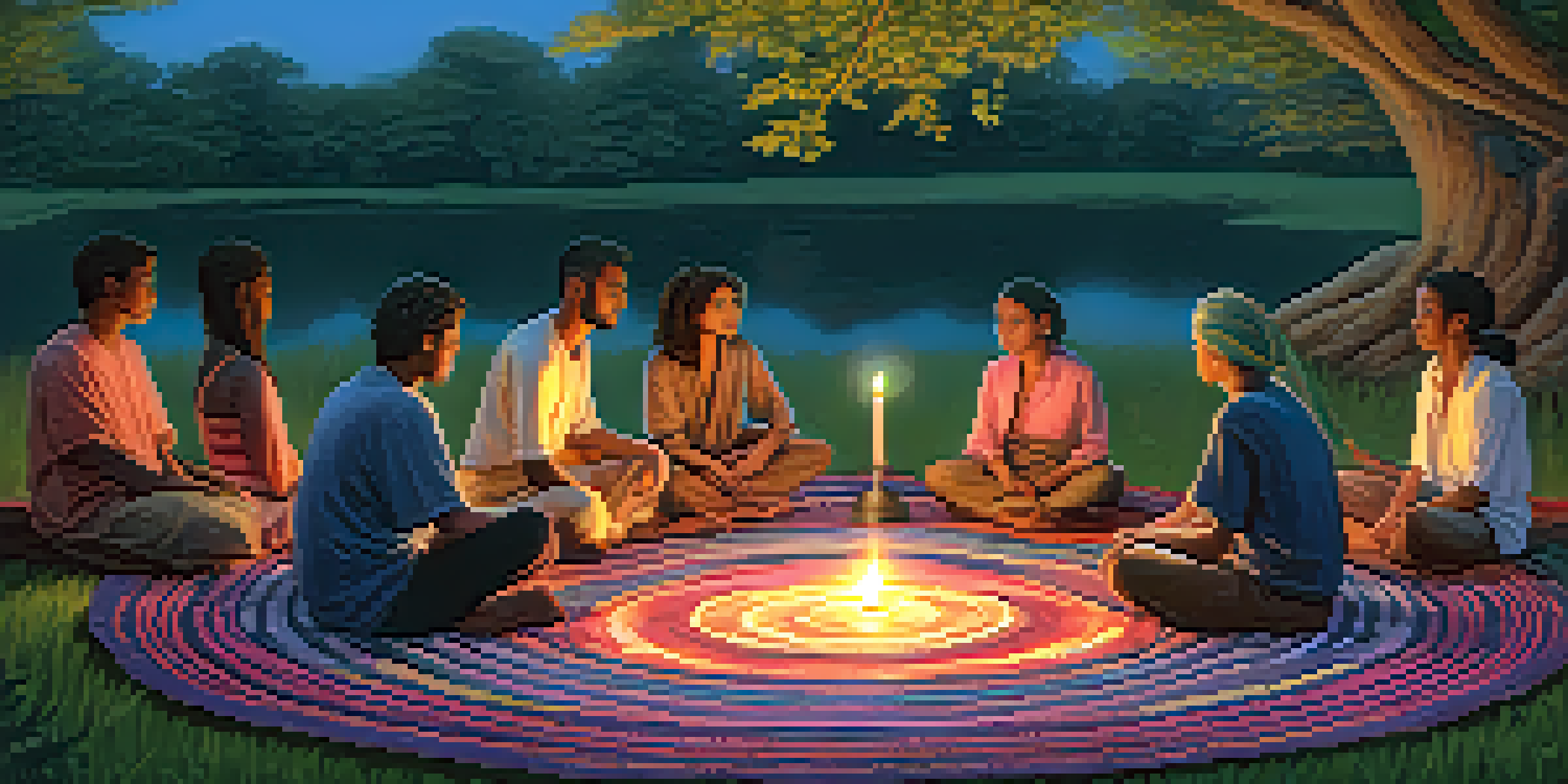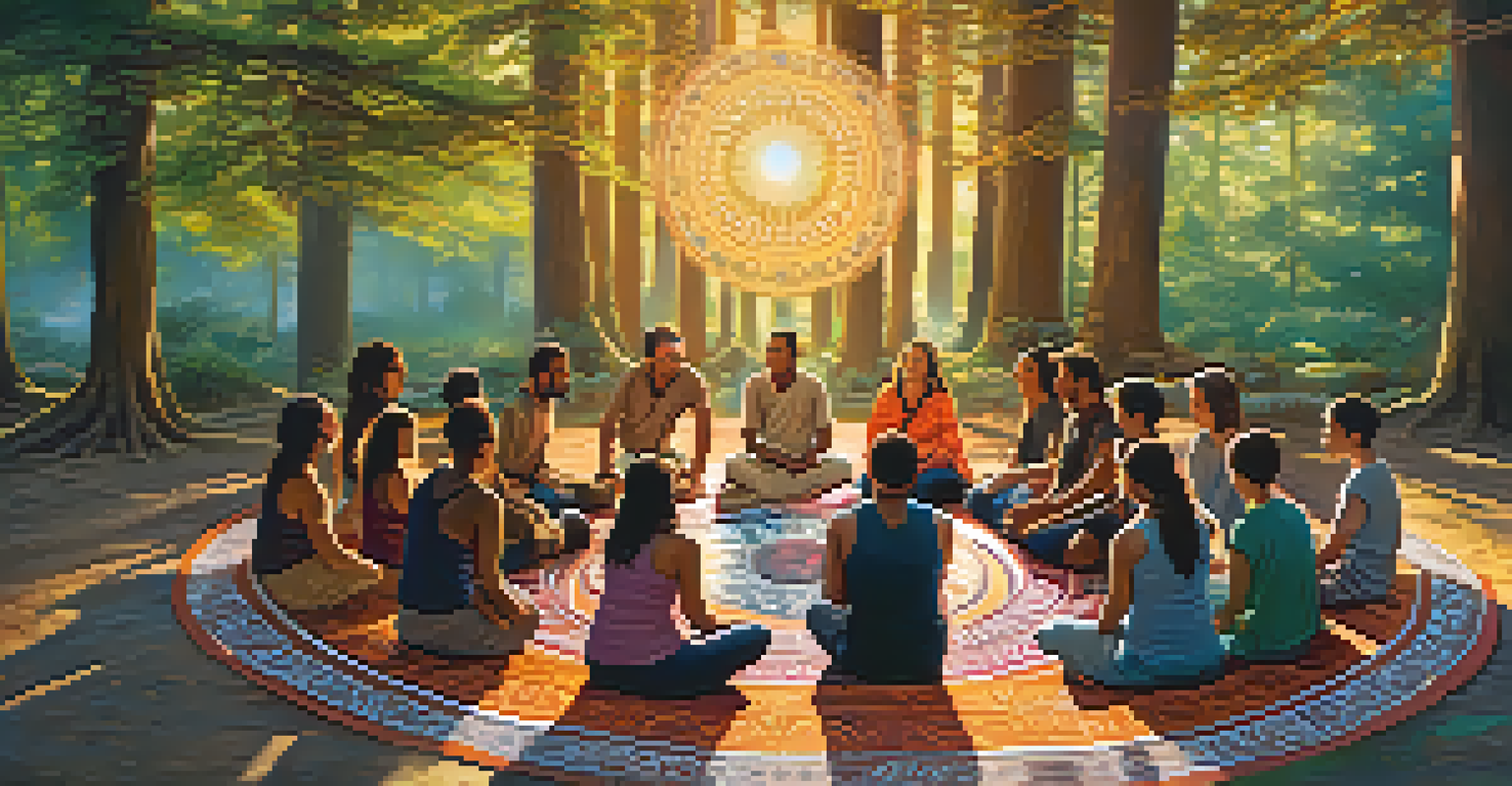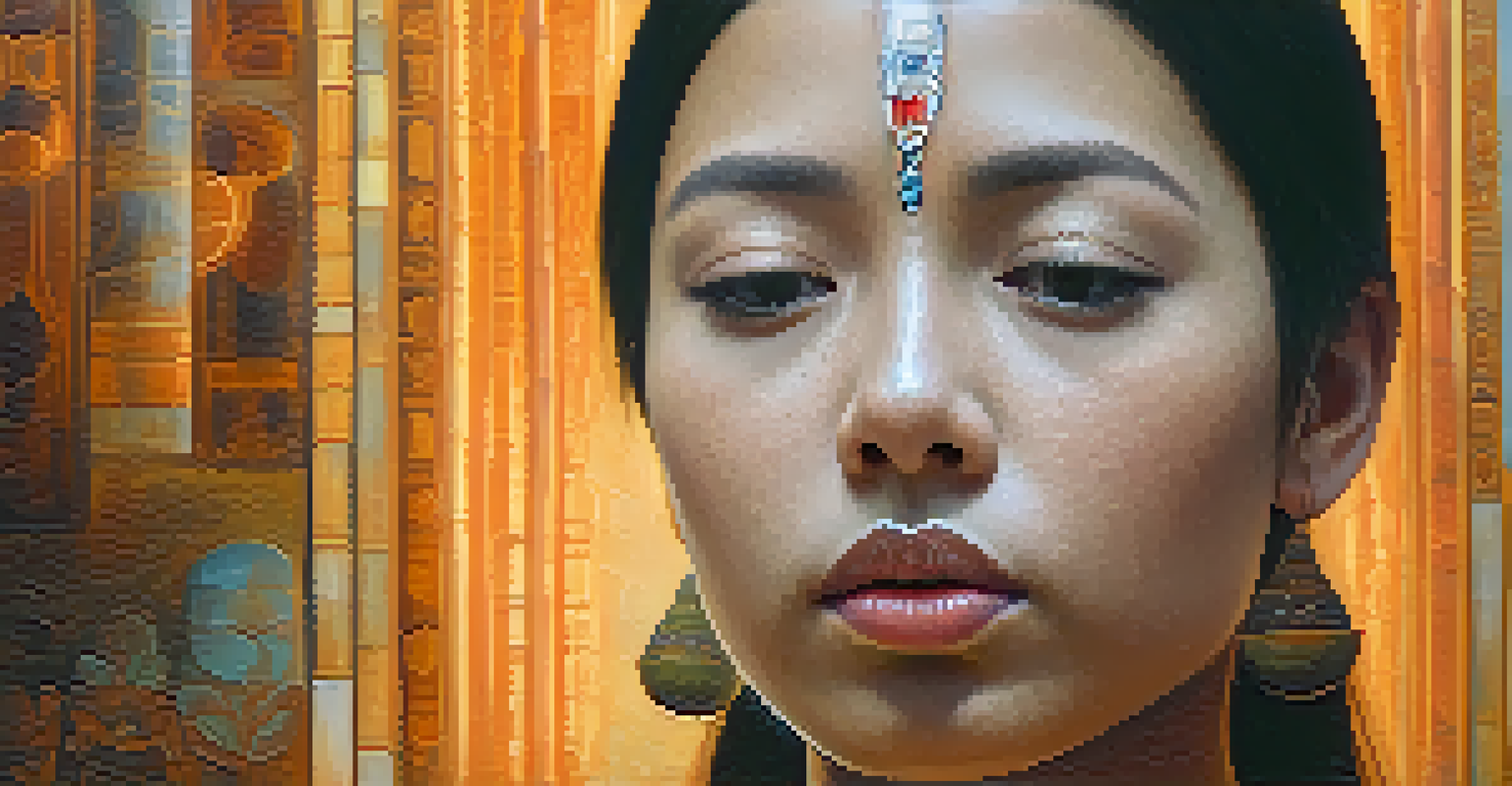Creating Rituals: Community Practices with Entheogens

Understanding Entheogens and Their Role in Rituals
Entheogens are substances that inspire spiritual experiences, often used in various cultural rituals. These natural compounds, such as psilocybin mushrooms and ayahuasca, can facilitate profound connections among participants. By harnessing these substances, communities aim to deepen their understanding of themselves and the universe.
The wound is the place where the Light enters you.
Rituals involving entheogens often create a sacred space where individuals feel safe to explore their consciousness. This setting promotes openness, allowing participants to share their insights and experiences. Over time, these communal practices can strengthen bonds and foster a sense of belonging.
Moreover, the intentional use of entheogens can lead to collective healing. Communities can address shared traumas or challenges, providing a supportive environment for growth. By coming together in these rituals, members can cultivate empathy and understanding, enhancing their collective journey.
The Historical Context of Entheogenic Rituals
Entheogenic rituals have a rich history across different cultures and civilizations. Ancient societies, from indigenous tribes to early religious groups, often turned to these substances for spiritual guidance. This historical backdrop highlights the long-standing human desire to connect with the divine or the transcendent.

For example, the use of peyote in Native American ceremonies has been a cornerstone of their spiritual practices for centuries. These rituals not only foster a connection to the spiritual realm but also reinforce community ties and cultural identities. Such traditions remind us that the practice of using entheogens is not a modern phenomenon but part of a larger human narrative.
Entheogens Foster Community Bonds
Entheogenic rituals create profound shared experiences that enhance empathy and understanding among participants.
Understanding this context is essential as it shapes how contemporary communities approach entheogenic rituals. By respecting and honoring these traditions, modern practitioners can create meaningful experiences that resonate with the wisdom of the past. This respect for history also encourages a deeper connection to the present and future of these practices.
Creating Safe Spaces for Entheogenic Experiences
Safety is paramount when engaging in entheogenic rituals, especially within a communal setting. Creating a safe space involves establishing clear guidelines and intentions for the experience. This ensures that participants feel secure and supported throughout their journey.
We do not see things as they are, we see them as we are.
Facilitators play a crucial role in maintaining this safety. Their experience and knowledge can guide participants, helping them navigate intense emotions or challenging moments. By fostering an atmosphere of trust, facilitators can empower individuals to explore their inner landscapes more freely.
Additionally, incorporating aftercare practices is vital for processing the experience. This may include group discussions or one-on-one check-ins, allowing participants to share their insights and feelings. Such practices help reinforce the sense of community and support that is essential for everyone involved.
Building Community Through Shared Experiences
One of the most powerful aspects of entheogenic rituals is their ability to foster community. When individuals come together to explore altered states of consciousness, they often share profound insights and personal revelations. These moments of vulnerability can create lasting bonds between participants.
Shared experiences, especially those that involve deep emotional or spiritual exploration, can lead to a greater understanding of one another. This understanding fosters compassion and empathy, essential ingredients for a healthy community. As members support each other's growth, the whole group benefits.
Safety Is Key in Ritual Settings
Establishing a safe space with clear guidelines and supportive facilitators is essential for positive entheogenic experiences.
Ultimately, these communal experiences can help redefine relationships within the community. Participants often leave the ritual with a renewed sense of connection and shared purpose, which can lead to lasting changes in how they interact with one another. The result is a vibrant, interconnected web of support.
Navigating Challenges in Community Rituals
While entheogenic rituals can be incredibly rewarding, they also come with their challenges. Participants may encounter difficult emotions or confront unresolved issues during their experiences. These challenges can be daunting, but they also provide opportunities for growth.
Facilitators must be prepared to handle these situations with care and compassion. By establishing a supportive environment and offering guidance, they can help participants navigate these complexities. This support is crucial for ensuring that everyone feels heard and understood.
Moreover, addressing potential conflicts within the group is essential. Open communication and conflict resolution strategies can help maintain harmony and trust. When challenges are met with understanding, the community can emerge stronger and more resilient.
The Role of Intention in Ritual Practices
Intention setting is a foundational aspect of any entheogenic ritual. Before embarking on the experience, participants are often encouraged to reflect on their goals and aspirations. This practice helps to create a focused and meaningful journey.
By articulating their intentions, individuals can direct their energies toward personal growth or healing. This clarity can enhance the overall experience, allowing participants to explore their chosen themes more deeply. Intentions may range from seeking clarity on a life decision to healing past traumas.
Integration Deepens Ritual Insights
Post-ritual integration of insights is crucial for translating experiences into meaningful changes within individuals and the community.
Additionally, group intentions can unify participants, creating a collective energy that amplifies the ritual's impact. When everyone is aligned in purpose, the experience becomes even more potent. This shared focus not only enhances individual insights but also strengthens the community bond.
Integrating Insights Post-Ritual
After an entheogenic ritual, the work continues as participants integrate their insights into daily life. This process of integration is critical for translating the profound experiences into actionable changes. Without this step, the insights may fade, and the potential for growth can be lost.
Facilitators and community members can support one another by sharing their experiences and reflections. Group discussions or follow-up meetings can provide a space for individuals to process what they’ve learned. This ongoing dialogue fosters accountability and encourages continued exploration.

Moreover, integrating insights often leads to personal transformations that benefit the entire community. As individuals implement changes based on their experiences, the effects ripple outwards, contributing to a healthier, more connected community. This ongoing journey of growth is what truly embodies the spirit of these rituals.